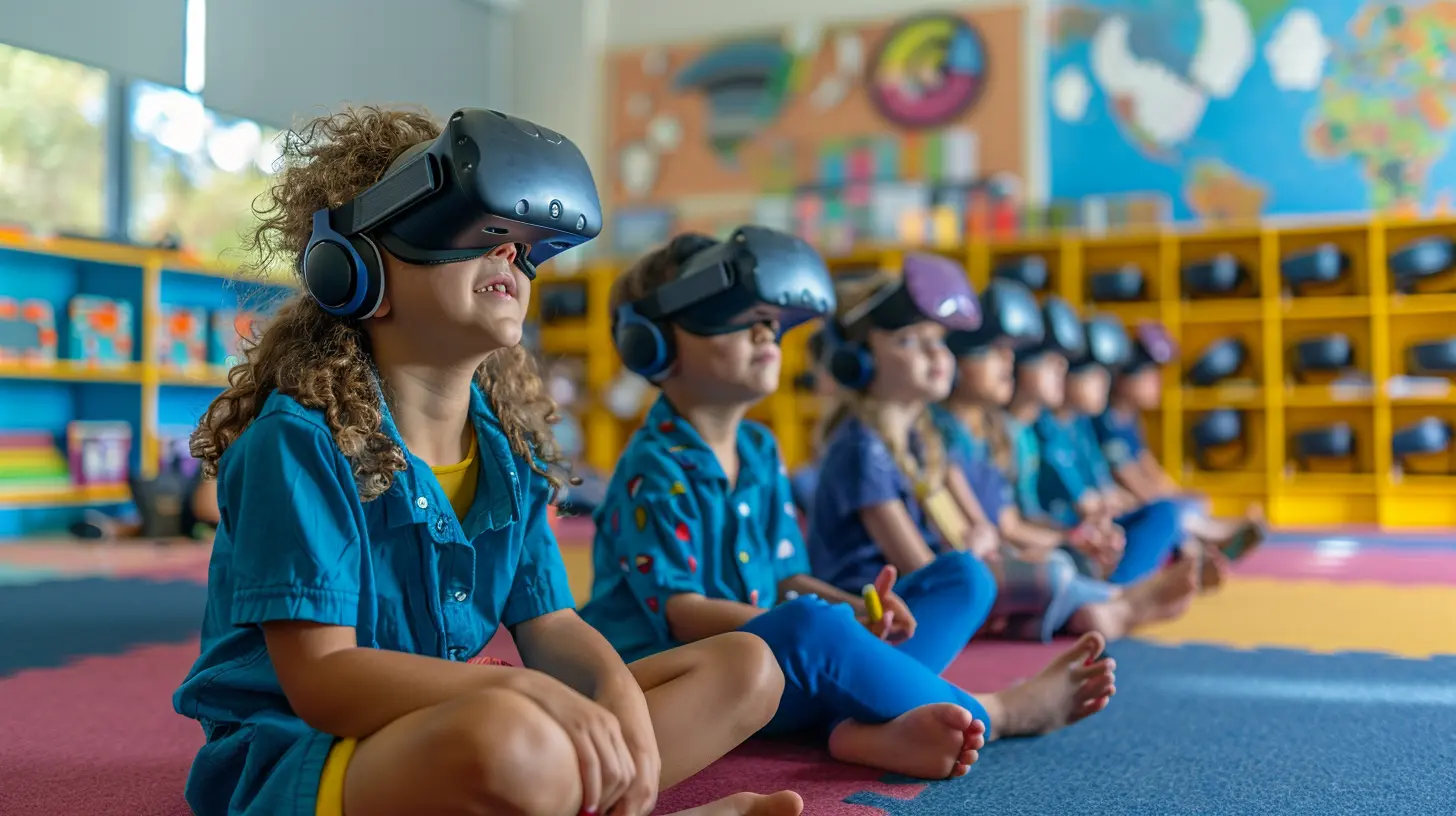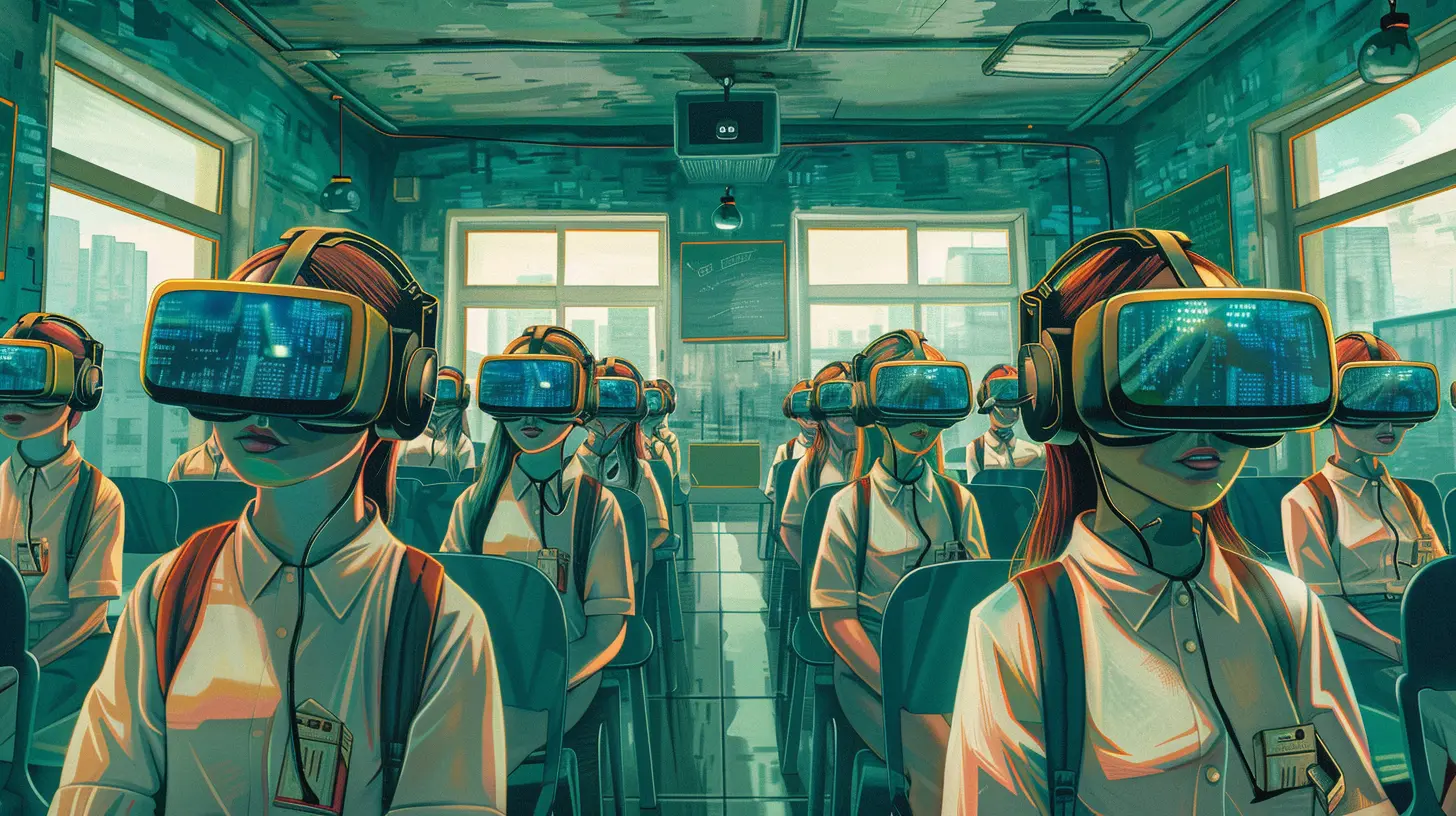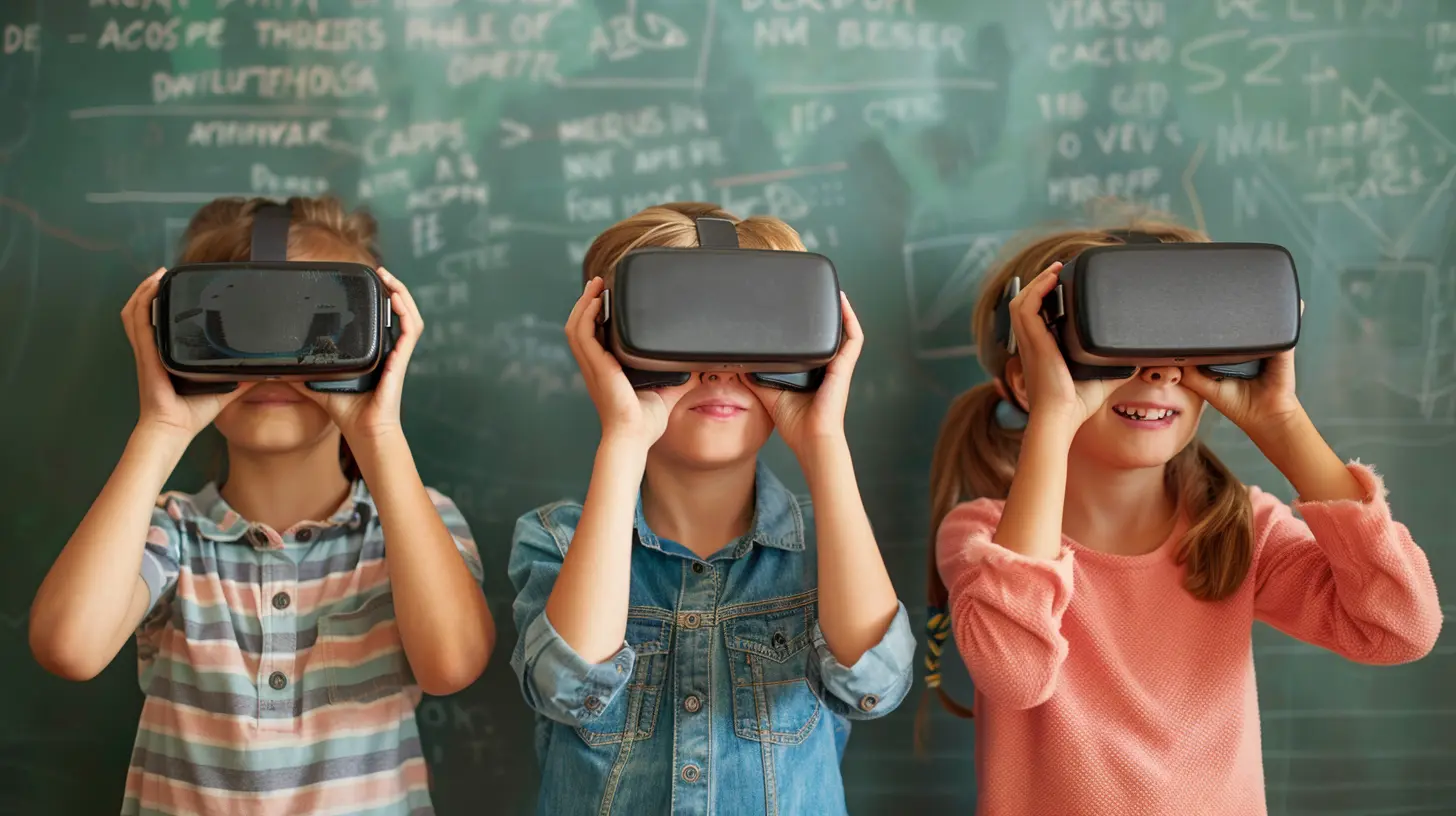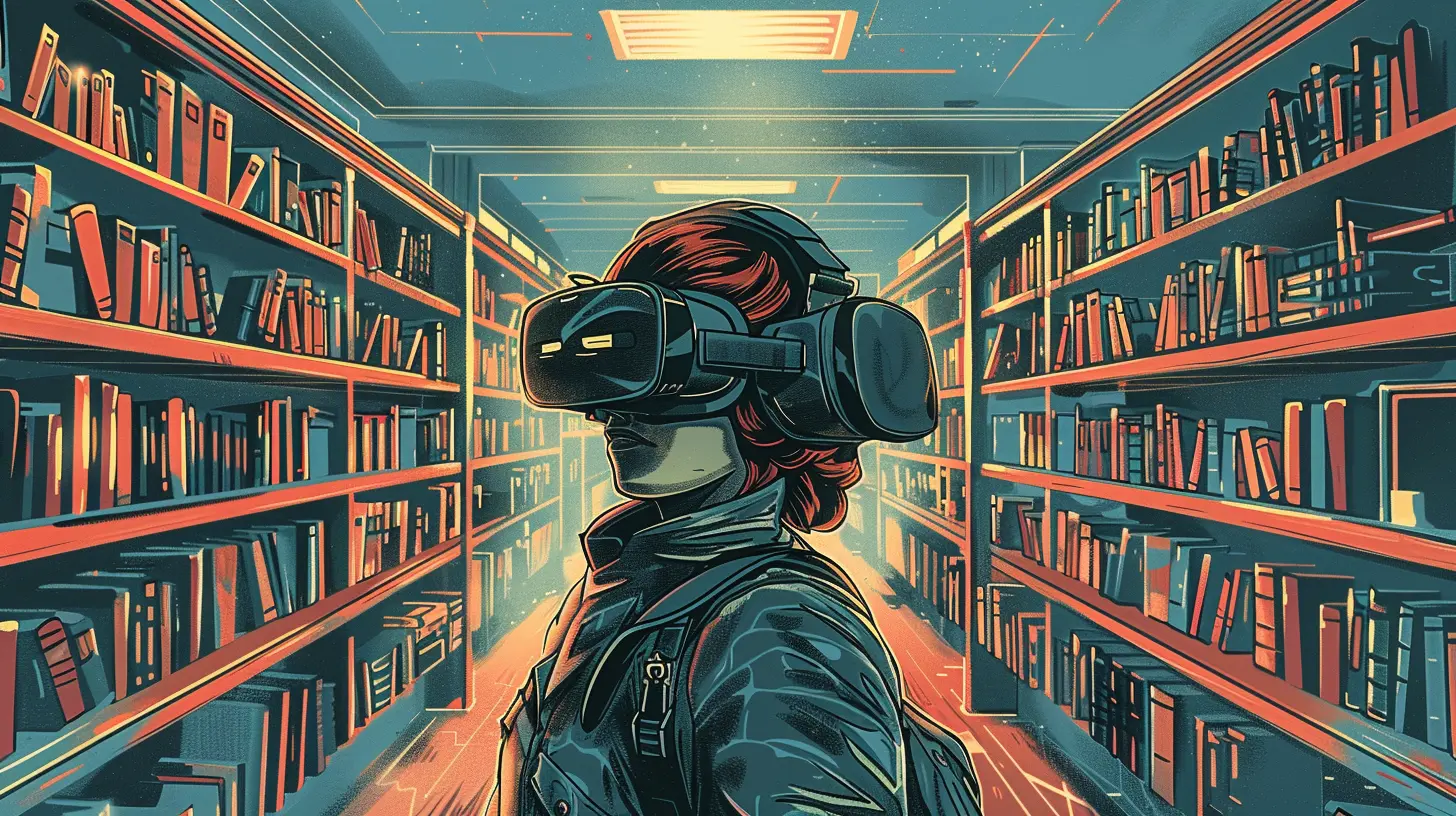How Virtual Reality Is Transforming the Future of Education
20 May 2025
Technology is racing forward at an unbelievable pace, and education isn't being left behind. One of the most exciting innovations? Virtual Reality (VR). What once seemed like a sci-fi dream is now becoming a reality in classrooms worldwide. Picture this: students putting on a headset and stepping inside the Great Pyramid of Giza instead of just reading about it in a textbook. Sounds amazing, right? That’s the magic of VR in education.
But how exactly is virtual reality changing the way we learn? Let’s dive in!

What Is Virtual Reality (VR)?
Before we get into its educational impact, let’s clarify what VR actually is. Virtual Reality is a digital environment that immerses users in a completely virtual world using special headsets. Unlike Augmented Reality (AR), which overlays digital elements onto the real world (think Pokémon GO), VR replaces the real world entirely with a simulated one.With VR, students can explore new environments, interact with 3D objects, and fully engage with the subject matter in ways traditional methods simply can't match. 
Why Virtual Reality Is a Game-Changer in Education
Traditional education methods—lectures, textbooks, and PowerPoint slides—have worked for centuries, but they have limitations. Let’s be honest; sitting in a classroom for hours staring at a book isn’t exactly thrilling. That’s where VR steps in to shake things up.Here’s why VR is transforming education:
1. Immersive Learning Experiences
Would you rather read about ancient Rome or walk through its streets, listening to market vendors and watching gladiators train? VR takes learning beyond imagination and lets students experience subjects firsthand.For example:
- Science students can conduct virtual chemistry experiments without worrying about explosions or harmful chemicals.
- History students can “travel” to different eras and witness events as if they were there.
- Medical students can practice surgeries in a risk-free virtual environment.
2. Better Engagement and Retention
We all know that students zone out during long lectures—it's just human nature. But studies show that interactive and immersive experiences help students retain information better. Learning through VR makes lessons more engaging and memorable, turning boring topics into exciting adventures.Would you forget a lesson where you explored the Amazon Rainforest, heard the sounds of exotic animals, and identified plants in a fully immersive way? Probably not!
3. Bridging the Gap Between Theory and Practice
One of the biggest frustrations in education is the gap between theory and real-world application. VR helps bridge that gap by providing hands-on experiences.Imagine this: Engineering students can build and test virtual bridges before working on real ones. Medical students can practice diagnosing patients through realistic simulations. It’s learning by doing—without the risks or costs of real-life mistakes.
4. Making Education More Accessible
Not all students have access to high-quality educational institutions or resources. VR can level the playing field by bringing top-tier education to anyone with a headset.- A student in a remote village can take a virtual tour of the Louvre Museum.
- A child with disabilities can experience field trips without worrying about physical limitations.
- Language learners can practice conversations with AI-powered virtual characters.
This technology is breaking barriers and making education more inclusive than ever before.
5. Boosting Creativity and Curiosity
VR isn’t just about consuming content—it also sparks creativity. Students can create their own virtual worlds, program interactive experiences, and bring their ideas to life in 3D.For instance, art students can step inside a Van Gogh painting and analyze brush strokes up close. Engineering students can design futuristic cities in a simulated environment. The possibilities are endless! 
Real-World Examples of VR in Education
So, who’s actually using VR in classrooms? Plenty of institutions have already jumped on board.1. Google Expeditions
Google’s VR education program lets students take virtual field trips to places like the Great Wall of China or the International Space Station. With a simple VR headset, they can explore the world without leaving their desks.2. Stanford’s VR Lab
Stanford University uses VR to train medical students, allowing them to perform simulated surgeries. It’s a safe way to practice delicate procedures before working on real patients.3. Engage VR
Engage is a platform where students and teachers interact in virtual classrooms. It supports everything from business meetings to full university courses in VR.4. VictoryXR
This company creates immersive learning experiences, including full college courses in VR, where students can dissect virtual cadavers in anatomy class or build molecules in chemistry.
Challenges and Limitations of VR in Education
Of course, no technology is perfect. While VR has incredible potential, it also has some challenges.1. High Costs
VR headsets and software can be expensive, making it difficult for some schools to afford the technology. However, as prices drop, more institutions will have access to these tools.2. Motion Sickness
Some users experience nausea or dizziness in VR environments. Advancements in technology are improving this, but it’s still a concern for some students.3. Lack of Content
While VR is growing in education, there’s still a limited amount of high-quality educational content available. More developers need to create engaging and accurate learning experiences.4. Teacher Training
Not all educators are tech-savvy, and implementing VR requires proper training. Schools must invest in teaching their staff how to use VR effectively in their lessons.The Future of VR in Education
Despite these challenges, the future of VR in education looks incredibly promising. As technology evolves, we can expect:- More affordable VR headsets, making VR accessible to all students.
- AI-powered virtual teachers who can personalize learning for every student.
- Collaborative virtual classrooms where students from around the world learn together.
- More realistic haptic feedback, so students can "feel" what they’re interacting with in VR (imagine actually touching objects in a virtual physics lab!).
In just a few years, VR could become as common in classrooms as computers are today.
Conclusion
Virtual Reality is revolutionizing education in ways we never imagined. It’s making learning more immersive, accessible, and engaging—turning ordinary lessons into extraordinary experiences.While there are still a few hurdles to overcome, one thing is clear: VR isn’t just a passing trend. It’s a powerful tool that’s shaping the future of education.
So, are we ready for a world where history classes take place in ancient Rome, science labs exist in virtual spaces, and students can explore the universe from their desks? It’s not just possible—it’s already happening.
all images in this post were generated using AI tools
Category:
Innovation In EducationAuthor:

Olivia Chapman
Discussion
rate this article
4 comments
Noora Fisher
Virtual reality offers immersive learning experiences, enhancing engagement and comprehension in education.
June 22, 2025 at 11:17 AM

Olivia Chapman
Absolutely! Virtual reality revolutionizes education by creating interactive environments that boost student engagement and deepen understanding.
Ranger Duke
VR enhances engagement, but accessibility remains crucial.
May 22, 2025 at 11:22 AM

Olivia Chapman
Absolutely! While VR offers exciting engagement opportunities, ensuring accessibility is essential for inclusive educational experiences.
Danica McDougal
In realms where dreams and learning intertwine, Virtual reality paints knowledge divine. A canvas of worlds, both vast and near, Transforming minds, igniting each sphere. With every glimpse, new horizons unfurl, Education reborn in a vibrant swirl.
May 21, 2025 at 1:04 PM

Olivia Chapman
Thank you for your poetic insight! You've beautifully captured the transformative power of virtual reality in education.
Thaddeus Cummings
This article beautifully captures the incredible potential of virtual reality in education. It’s inspiring to see how immersive experiences can enhance learning and engagement, opening new doors for students and educators alike. A remarkable leap forward!
May 20, 2025 at 1:55 PM

Olivia Chapman
Thank you for your thoughtful comment! I'm glad you found the article inspiring and appreciate your insights on the potential of virtual reality in education.



